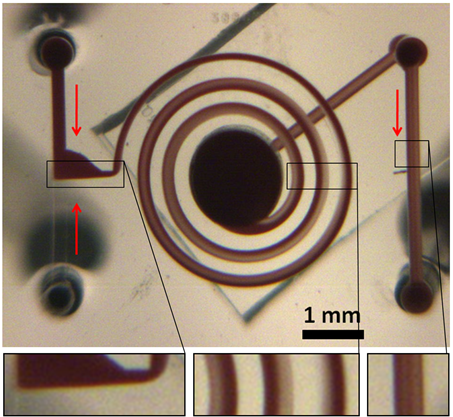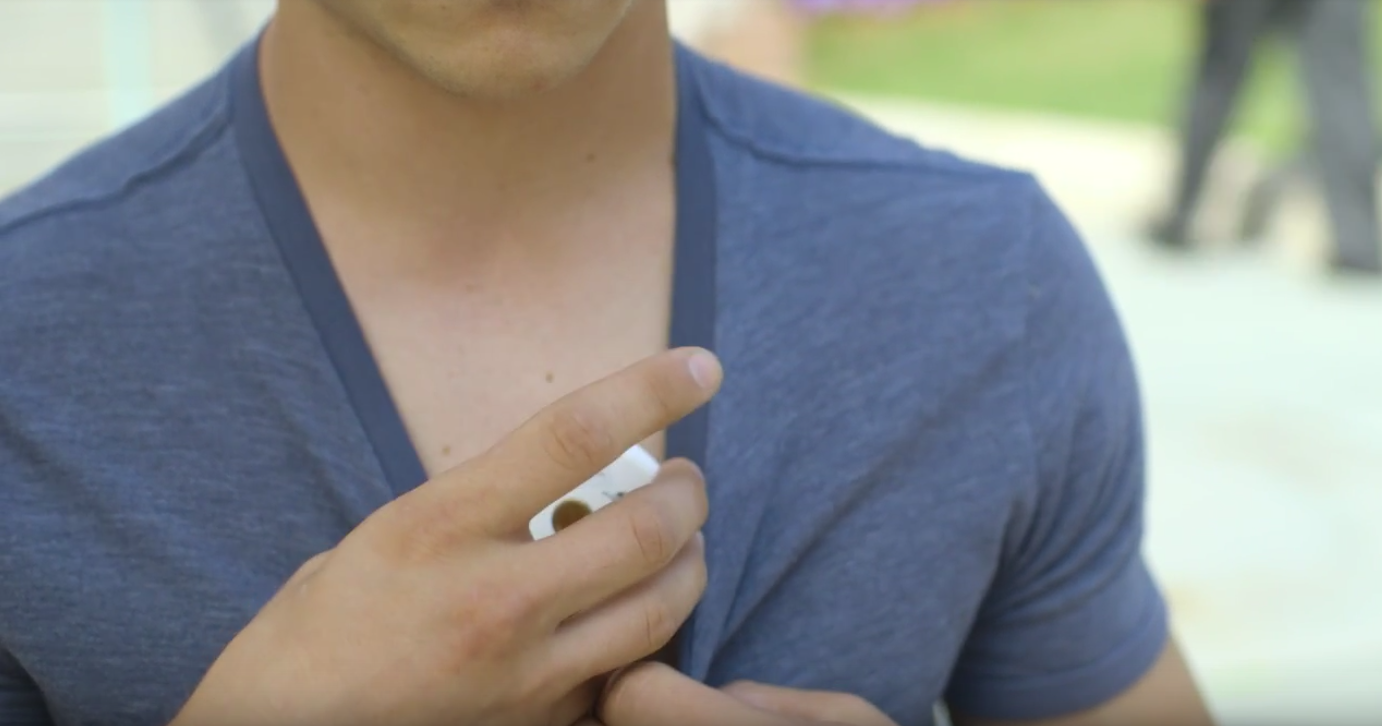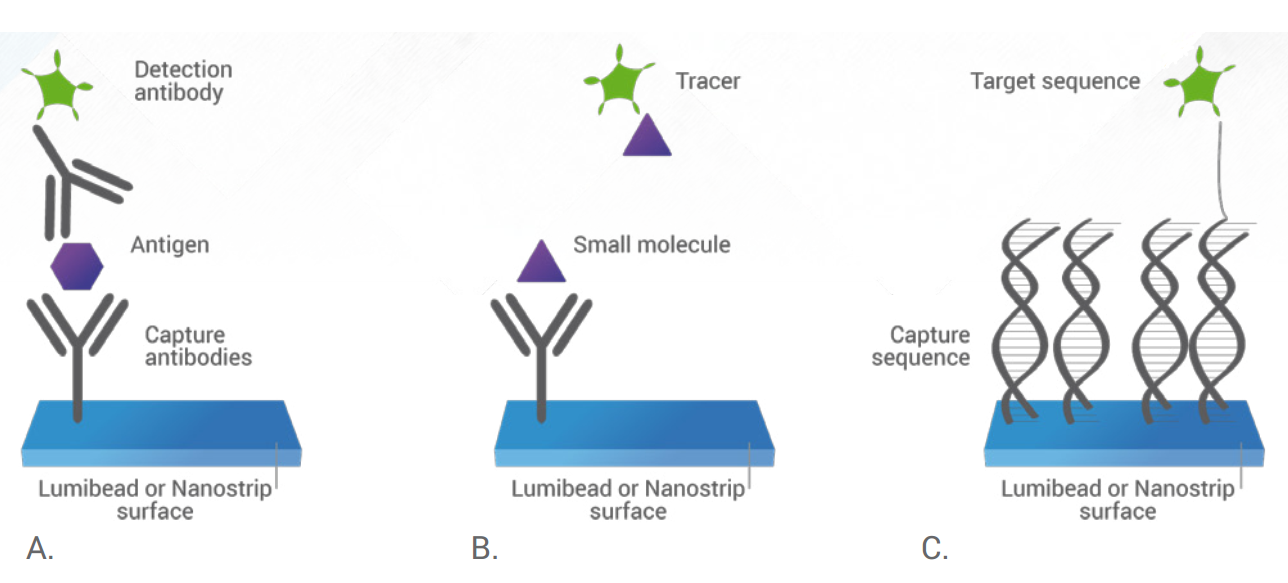Core Innovations
In order to bring vast capabilities to digital health, there needs to be fundamental innovations. We have worked hard to invent the future. Below are the patented and patent pending innovations that enable our hardware:
Nanostrips and blood cells
Spiral micromixer and three essential components of design: inlet, spirals, and detection point.
rHEALTH diagnostics work on the principle of laser-induced fluoresence.
Sample consumable
Individual applying the SKYE sensor.
Nanostrips are rectangular microparticles that can be barcoded to allow for massive multiplexing with small sample volumes. These are similar to traditional test strips, except they are shrunk in volume by over a billion-fold.
Spiral Vortex Micromixer achieves chaotic advection necessary to overcome laminar flow within the microfluidic channels and enable micromixing of small blood samples. US Patent 9,194,780.
Miniaturized Optical Block. Major advances in the miniaturization of complicated and large optical systems make it possible for us to deliver the rHEALTH in its handheld form. The optical block is 1000x smaller in mass and volume than comparable performance optical assemblies.
Microvolume sample loader. Innovation for collection of small volumes of biological sample. This allows us to collect less than 10 uL of sample for analysis. The entire sample is analyzed with minimal residual volume.
The SKYE sensor includes integrated sensing technology for measuring vitals with a single device. The following is a list of targeted vitals for the SKYE Sensor:
- ECG and Heart Rate
- Respiratory Rate
- SpO2 (oxygen saturation)
- Accelerometer
- Core Temperature
- Cuffless Blood Pressure
Technologies above are limited by federal law to investigational and research use only. Not approved for sale in any market.






![Results are plotted with arbitrary units (AU) versus [TNFa] (pg/mL). Open symbols indicate the LOD. LOD for Nanostrips is < 0.1 pg/mL for Nanostrips as compared to 10 pg/mL for ELISA and 80 pg/mL for conventional beads. ](https://images.squarespace-cdn.com/content/v1/582c9cd19de4bbb2b259cf0d/1480946845369-QDOC1AUW6HB6VWTY1AAV/image-asset.png)

















